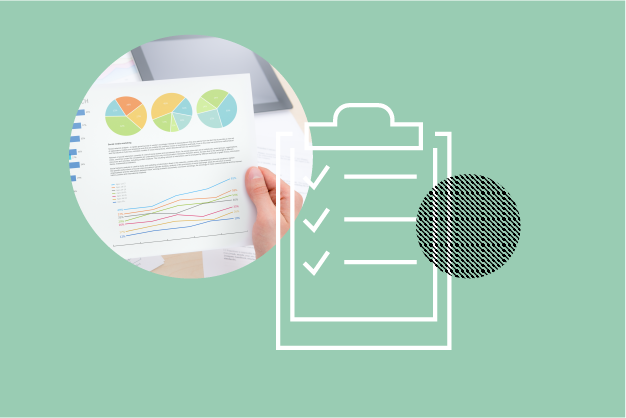
Investing can be incredibly complicated, with hundreds of thousands of investment choices that can be combined in nearly infinite variations. The sheer number of options available -and the high stakes involved in getting decisions right - can make the process overwhelming.
That’s one reason why rules of thumb can be useful. They’re a way of cutting through complexity and helping investors make decisions more quickly without getting bogged down in endless questions about “what if” or “what’s next".
Here we look at some of the most common rules of thumb for investors:
1. Keep 100 Minus Your Age in Stocks
For decades, investors have relied on this simple formula for basic asset allocation guidance and denotes the proportion of your portfolio that should be in bonds and stocks. The guideline is based on the notion that younger individuals can afford to take on more investment risk because of their longer time horizons.
So, a 30 year old would have 70% (100 minus 30) of their portfolio in stocks, and a 60-year-old would have 40%. As investors get older, their time horizons shorten, making an increasing fixed-income allocation more prudent.
More recently, 120 has been showing up as a starting point, partly because average life expectancies have gradually increased and bond yields have fallen.
Why it Works
This rule has stood the test of time partly because it’s simple and intuitive. There’s a strong link between life expectancy and investment time horizon, since a portfolio only has to last long enough to sustain a person during their natural life (unless someone wants to set aside money for bequests after death). It also indirectly reinforces portfolio rebalancing, as keeping allocation in line with an age-based target would require pruning back equities after significant gains or adding to them after market corrections.
Limitations
Now that bond yields are even lower, fixed income allocations are likely to generate lower returns than in the past. The age-based guideline may also not be optimal for investors who are either just starting out, or those approaching the end of life. A 25-year old investor with decades left until retirement doesn’t necessarily need any fixed-income exposure as part of a core retirement portfolio, assuming she already has an emergency fund and is willing to take on the higher risk inherent in an all-equity portfolio.
The Verdict
Age-based guidelines are a reasonable starting point but might be on the conservative side overall.
2. Diversify to Reduce Risk and Improve Returns
It's often said that diversification is the only free lunch in finance. This quote, usually attributed to Nobel Laureate Harry Markovitz, refers to the power of diversification to reduce risk without necessarily hurting returns.
Why it Works
In many ways, diversification does have incredible power. Within an asset class, adding up to about 20 additional securities can dramatically reduce a portfolio’s overall risk profile. And adding asset classes with lower correlations is where the magic really happens. The lower the correlation, the bigger the reduction in volatility. It's one of the few cases where the whole can be more than the sum of the parts; a well-constructed portfolio can have better risk-adjusted returns than its component parts alone.
Limitations
The problem is that correlations shift over time, so what worked in the past won’t necessarily work in the future. In addition, adding asset classes to reduce volatility can also drag down returns. International diversification, for example, might have seemed like a no-brainer for US investors 30 years ago, but over the past 10 years, non-US markets have generally underperformed, so diversification has dragged down returns more often than not. Other popular diversifiers, such as commodities and precious metals, have also gone through prolonged slumps at times.
The Verdict
Partially true, but greatly oversimplified. Diversification remains a sound strategy, but it's an insurance policy that has a cost and won’t always pay off.
3. Use the 4% Rule in Retirement
Investors and financial advisers have long relied on Bill Bengen’s landmark research on sustainable withdrawal rates - the rate at which you can withdraw your retirement savings without the pot running out before you die. Bengen found that setting an initial withdrawal equal to 4% of the portfolio’s starting value and then adjusting each year’s withdrawal amount for inflation has historically never fully depleted portfolio’s value, even during some of the worst market periods since 1926.
Why it Works
This is another rule of thumb that has stood the test of time because of its ability to cut through complexity and provide reassurance about one of the biggest fears for retirees: running out of money. It’s also useful because it can be easily reverse-engineered to determine a required savings amount for retirement. A 4% spending guideline would dictate a starting portfolio equal to 25 times annual spending. If you know that you want to spend $50,000 per year in retirement, for example, you can multiply that amount by 25 to figure out that you’ll need a portfolio size of $1.25 million.
Limitations
The 4% rule assumes that inflation-adjusted withdrawals remain at the same level year in and year out during retirement, regardless of market performance or changes in spending needs. In practice, many retirees spend more in the early years of retirement on travel and other pursuits, then spend less as they age and more toward the end of life because of medical costs or long-term care. In addition, there’s some question about whether 4% will still be sustainable in an era of lower bond yields, which will likely weigh down returns for portfolios that include fixed income.
The verdict
The 4% rule is still a reasonable starting point, but investors may want to use a slightly lower number to account for potentially less robust long-term returns.
4. Keep 3-6 Months’ Spending in Emergency Savings
Beginning investors are often advised to start by establishing an emergency fund. Life can be unpredictable, and unforeseen events like car breakdowns, medical costs, or sudden unemployment often involve large cash outlays. Without a cash cushion, people may be forced to take on debt or dip into long-term investments to cover these costs.
Why it Works
Setting aside cash to deal with unexpected events is an essential foundation for personal financial planning. Without this, it’s difficult to make progress toward other financial goals, such as paying down debt, building retirement savings, or setting aside money to help pay for a child’s college education.
Limitations
I’d consider three to six months of savings a bare minimum. Individual risk tolerance varies, but I’m personally more comfortable keeping cash reserves closer to 12 months’ worth of spending. That makes it easier to cover any unexpected expenses without selling investment assets at an inopportune time. Unemployment remains a huge issue for many people around the world, and it often takes several months for a laid-off worker to find new employment, particularly in an environment such as the coronavirus pandemic, which has shuttered many businesses and forced others to cut back on staff.
The Verdict
Three to six months is a good starting point, but consider setting aside more if you can.
Conclusion
Most of the rules of thumb discussed above have stood the test of time. But understanding some of the nuances behind how they can--or can’t--support a sound portfolio strategy can help investors apply them more effectively.





























